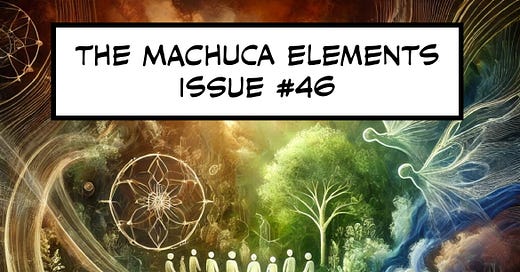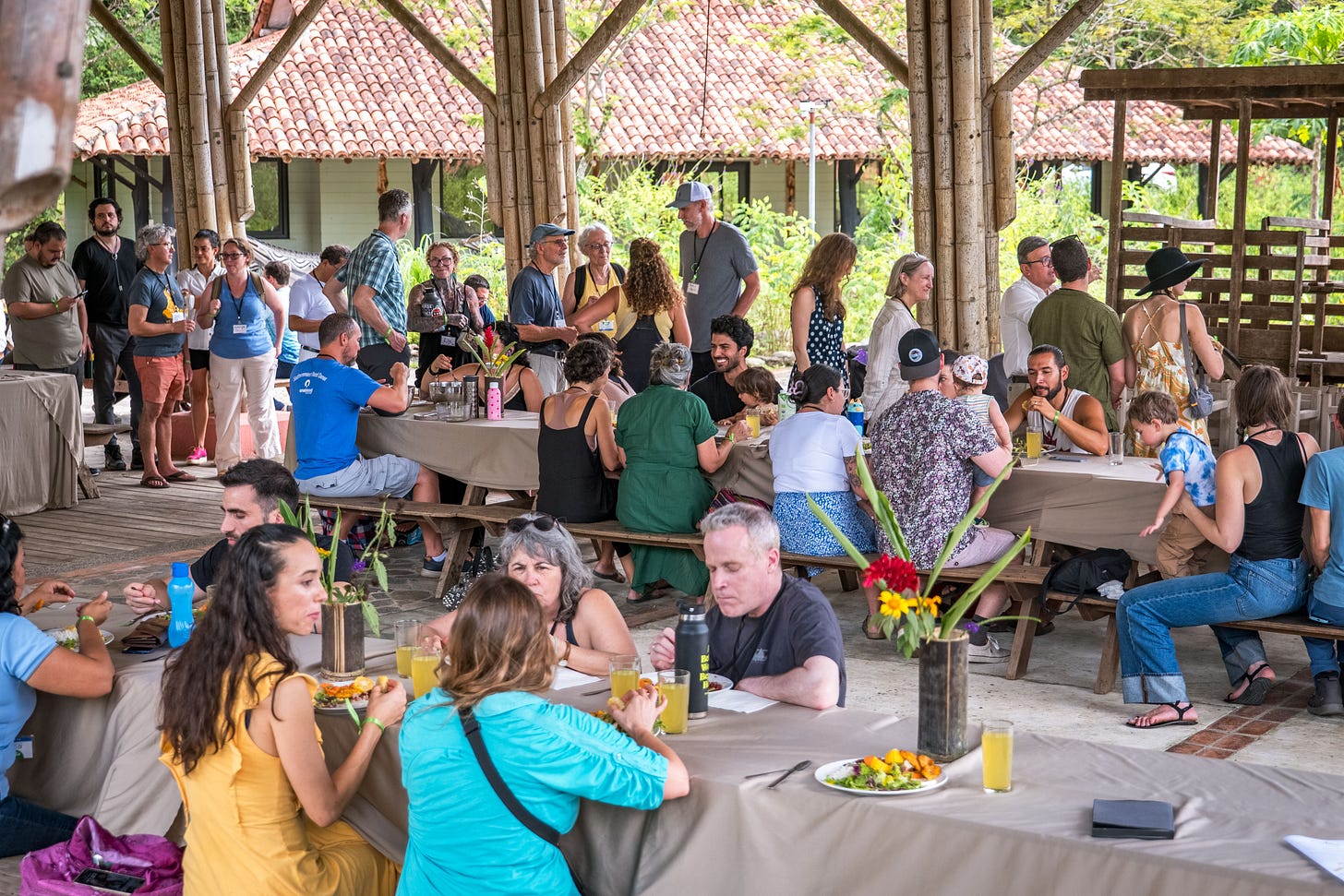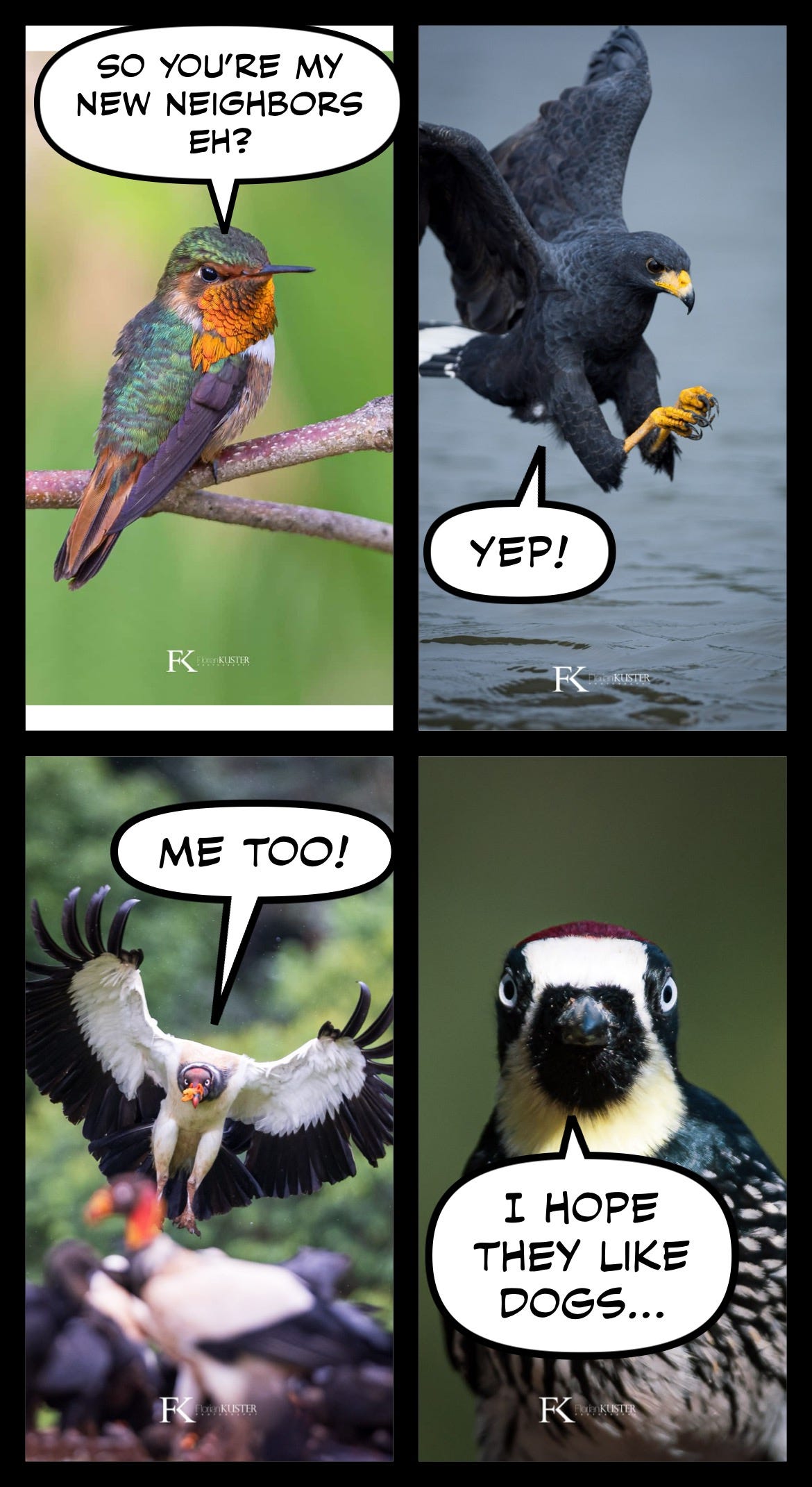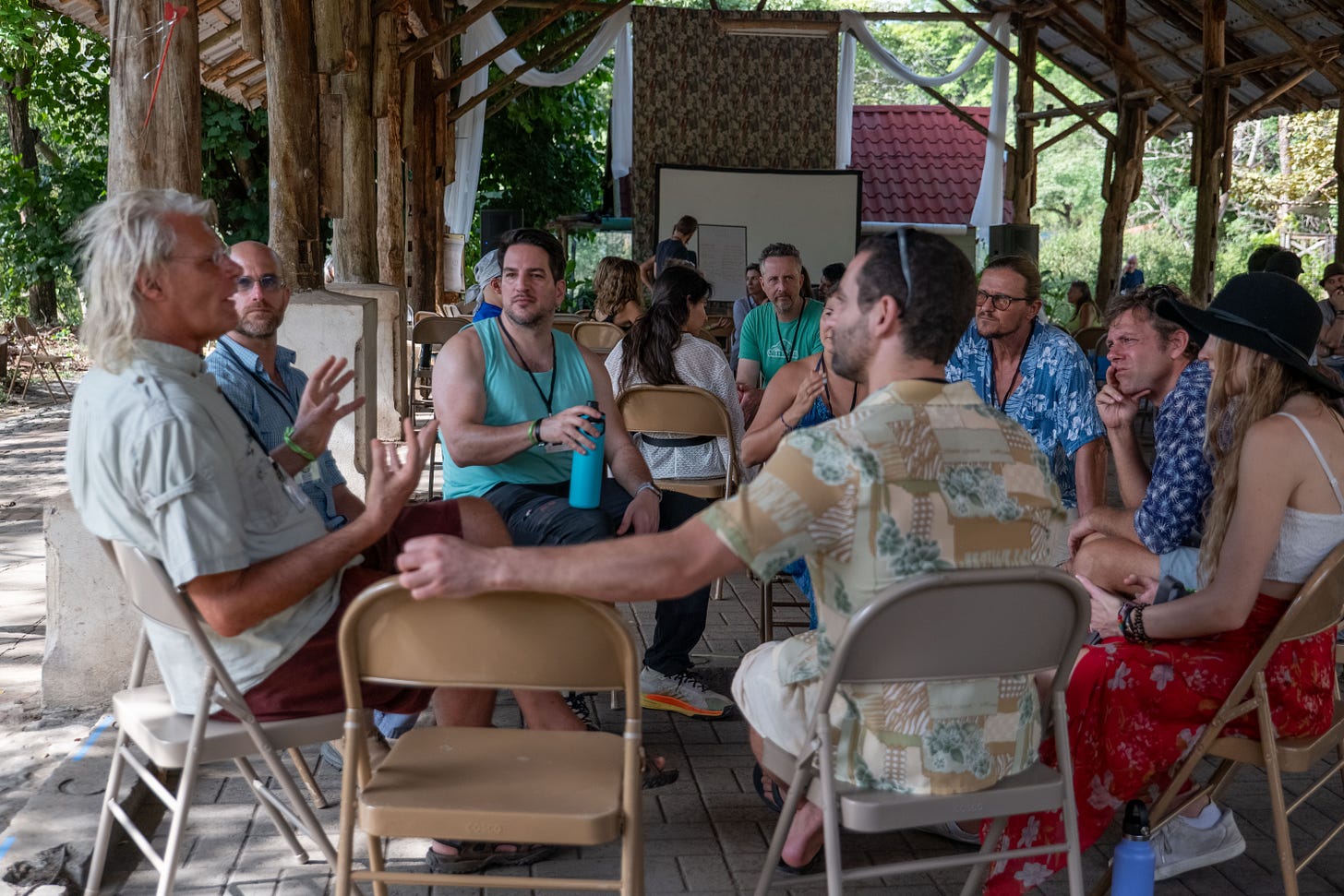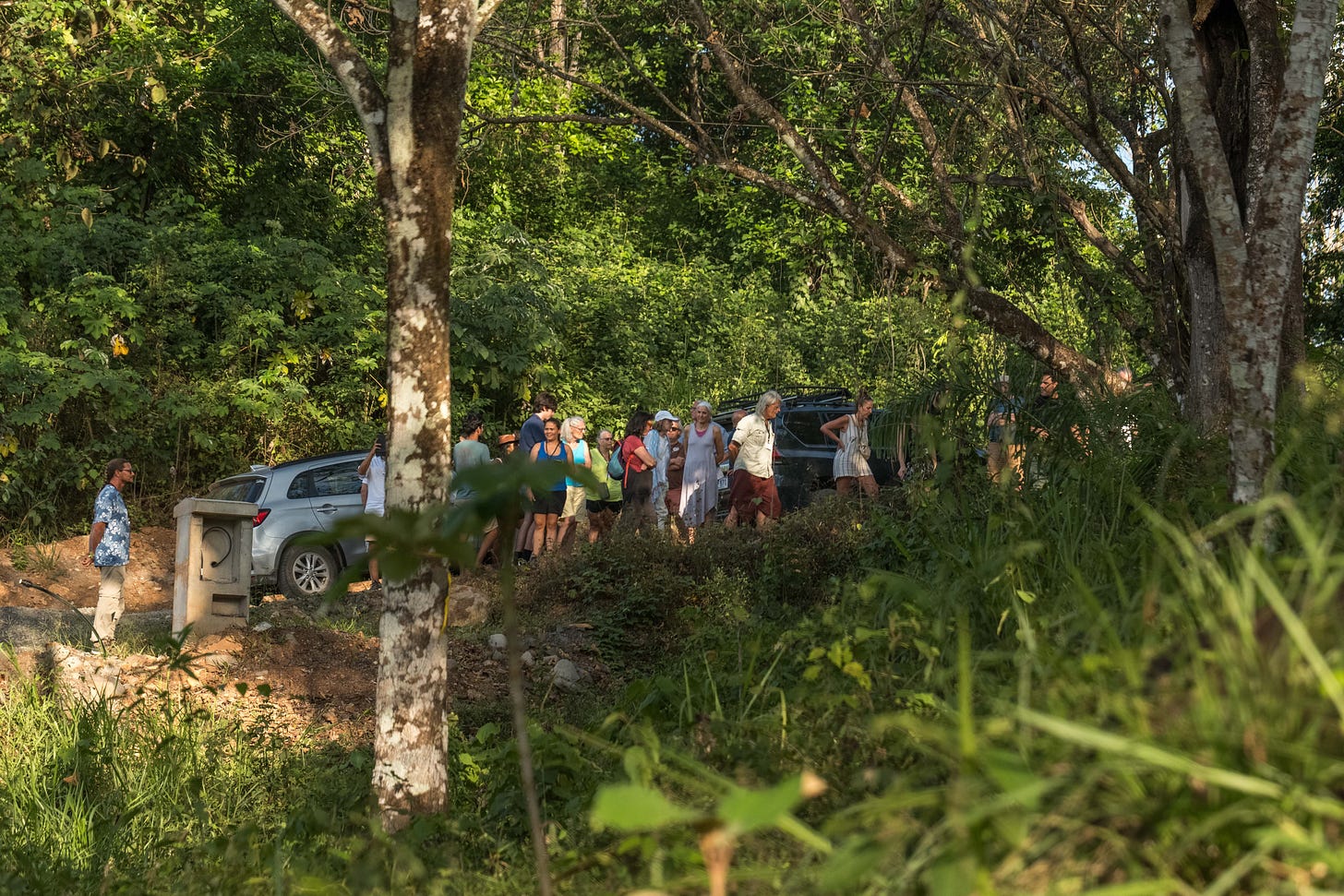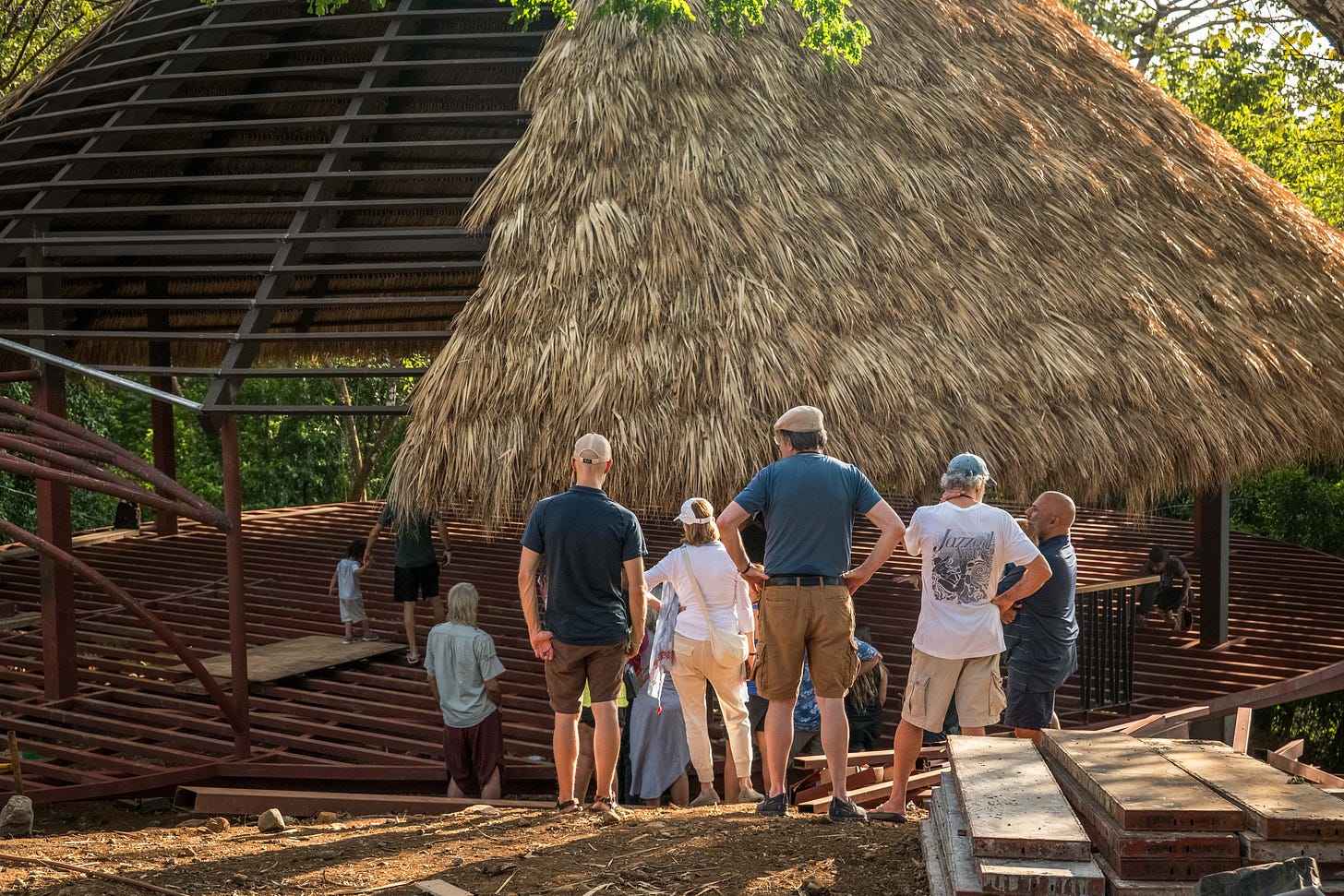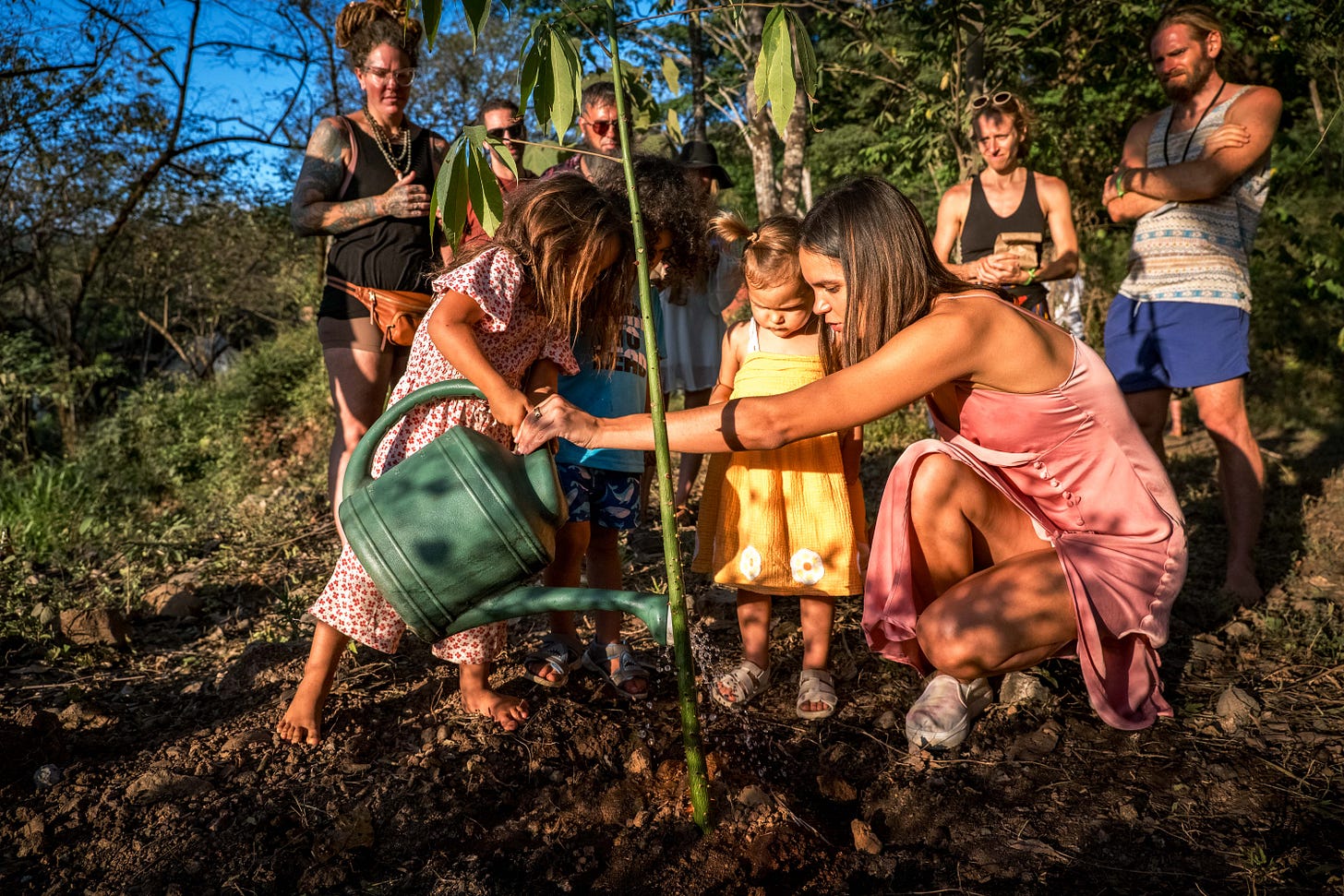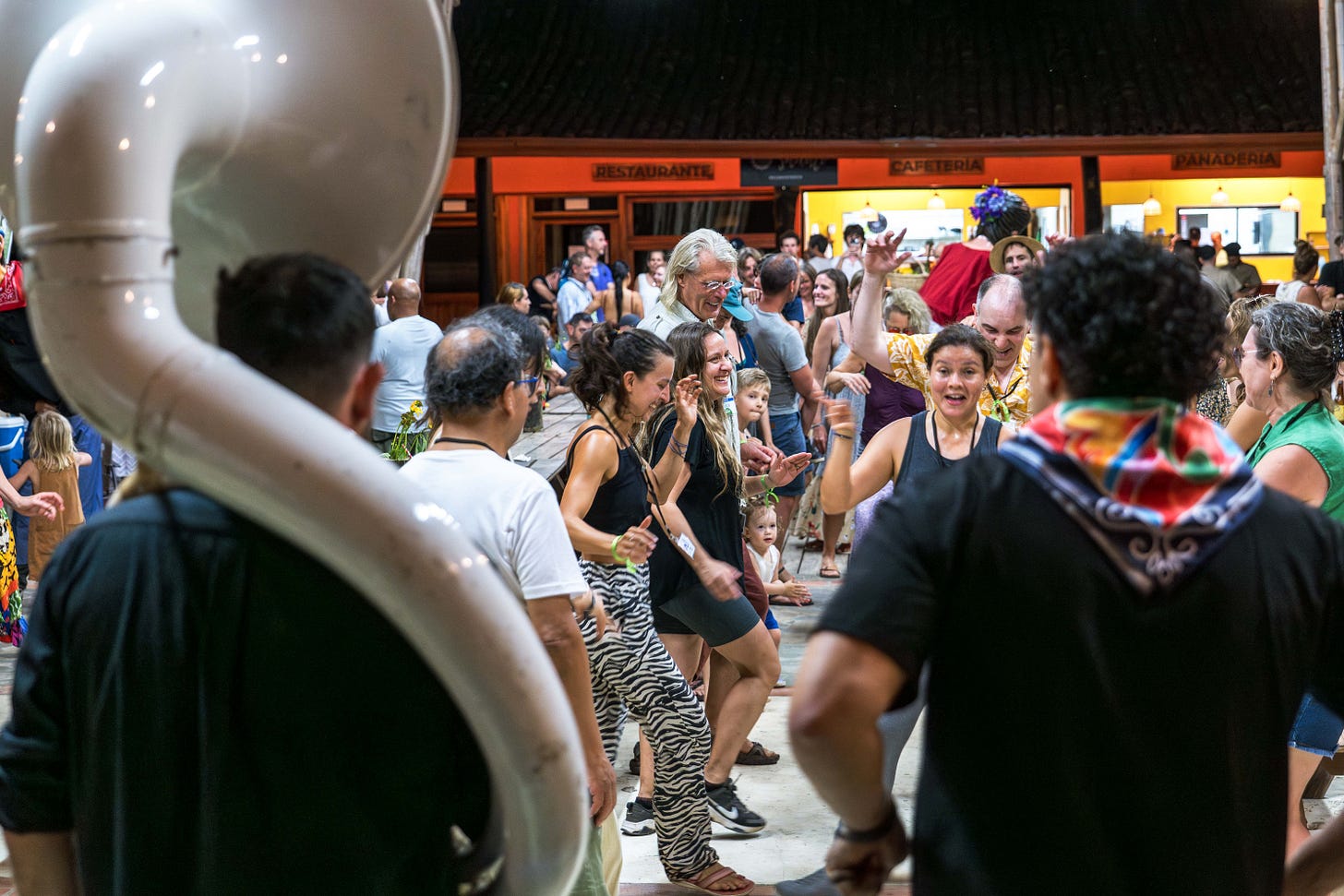Issue #46: ESM Future Neighbors Gathering - Building a Community from Scratch
Imagine this scenario, you are asked to spend 3 days with complete strangers, who may not share any interest with you and might be of different age group and demographic, they live somewhere far away from you, you didn’t pick them and they didn’t pick you for this 3 day adventure. The only thing you have in common is that you are all keen to build a house in Costa Rica and spending all or some of your time there in an “Eco Village”, which does not exist yet! When I put it like that, who would come right? And yet, miraculously, thats exactly what happened last weekend at the biannual EcoVilla San Mateo(ESM) future neighbors gathering, where about 150 people from all over the world gathered, to meet, to connect with each other and the land. This was the 2nd and the largest such gathering to date with another one already planned for August.
Community building is a bit like Marriage in reverse. You first make the following statement: “I hereby declare that I shall invest a large part of my life savings to buy land and build a house and spend the rest of my life with my neighbors(whom I have not yet met), living together in peace and harmony in community until parted by death(or a successful sale offer)”. The exact language of the investment contract varies, but that’s the gist of it. Only after you make these vows, do you get to meet those neighbors at which point you can decide if your vows still hold, or if there is a matrimonial mismatch moment. And in the case of “veil shock”, one reverts to a customary message of “This community is so wonderful, we wish we can realize this dream together, but our life plans have changed, so if anyone would like a south-facing, walking distance to river lot #902, its now for sale”.
While of course that sometimes happens, for the most part, everyone is pleasantly surprised. Though you have to admit that anywhere else in the world, when you’re choosing where you’d like to live, the first thing you do is you go to such a place and spend some time there to figure out who lives there and what’s the “vibe” and if that vibe rhymes with your vibe you choose to stay. But what if nobody lives there yet? What if there is no vibe yet? What if the only vibe is “this other community” with “these other people” and this one is going to be “like it, only better!”. The fundamental point here is part of community creation is this vibe-making and sense-making and purpose discovery process which needs to happen along with all the roads, bridges and underground cable laying.
There are many models of community-building, though most of them start with some small “core” group that aligns on a set of shared values and already has an established vibe and decides they want to live together, they buy some land, create a small community and slowly and organically grow attracting members one at a time, adjusting their process along the way. This has the advantage of people being aligned at the start and the vibe evolving slowly and intentionally with strong steering from the initial set of core members, however it has the disadvantage of limited scale and slow growth. You can only start with a handful of families and you can only grow so much, usually because you are capped by the amount of land you were able to get. What if you wanted to create a village of 300 families and you wanted to do it in a matter of 2-3 years and you want the vibe to emerge and the community to actually feel like community once people are living here? To do that, you have to expedite the process and you have to put as much energy into the so called “invisible infrastructure” as you do in the visible one.
And that fundamentally is what the ESM Future Neighbors Gathering was about. The purpose was to build relationships and connections among the neighbors and develop the necessary trust which can only be done in-person. Once that foundation is in place, we can collectively start to answer the key question of “What is our shared purpose?” and “What this community is about?” As Charles Eisenstein said during the gathering “this community already has a purpose, it’s something that needs to be uncovered, but not necessary developed.” Today ESM is community in name only, where people chose to be part of it because they resonated with a lifestyle that was marketed. But while “live in harmony with nature” is a great sticker we can all put on our cars bicycles, this neighbors meeting was meant to explore what that actually means. The common ground of “default society not good, some alternative is better” was a great start and now it was time to materialize that into concrete form with more explicit ideas, goals and values.
The 3 days relatively full schedule was organized around the themes of increasing coherence amongst neighbors as well as connecting to the land and the local culture. Much intention was placed on creating connections via various exercises of sharing of personal stories, tuning into purpose and sharing of the meals. With time to relax and take in the nature via hikes and river swims.
There were of course logistical updates and tour of the ESM in its latest form, if you haven’t been there in a while it has transformed quite a bit in the last 6 months with roads, water, common areas, first pool, garden domes, etc popping up all over the place.
One highlight for me personally(though full disclosure, I only attended part of the event) was the governance session where the neighbors practiced decision making as well as managing disagreements. In some ways the current phase of ESM Community to go back to my marriage parallel is the “dating” phase. Everyone involved is happy and excited about the future and is trying their best to make it work. Of course its quite easy when you only see each other on weekends, as anyone who’s been in a long-term relationship knows, that phase changes rapidly once you move-in together and suddenly you realize that he doesn’t neatly fold up the shower towel when putting it back and sometimes just throws it on the floor? You’re puzzled how a Virgo could possibly do that and send him to do personal trauma healing work.
But I digress, the point here is at some point, or more likely many times a year, there will be disagreements between neighbors that will need to be resolved. The process by which those disagreements are managed is one of the key factors in deciding whether community thrives and grows or if it regresses into a “neighborhood” with proverbial social fences between neighbors, some taller than others. Luckily a lot of thought has been given to this and a framework of decision making is unfolding, grounded in transparency, fairness and efficiency. Likewise a recognition that regardless of the framework, at the end of the day its possible that someone will not be happy and a process is needed to hear that person, to process their emotions so that there is nothing left under the surface. How exactly that will work is still developing, but already during the weekend we practiced with some manufactured disagreements, to see what it feels like to be on the other side of whatever the issue is and still face your neighbor lovingly and with an open heart. Or as neighbor Keri Shin would put it - “Being In Tension with Intention”.
In addition to all the “inside communal bubble” stuff, there were sessions allocated to cultural exchanges and deeper understanding of the surrounding area where we are guests. Pedro, a local Tico, delivered a powerful talk reminding us that while we worry about how many bathrooms we should have in our new house, there are people right outside of our gates who are struggling to meet basic needs and its important to keep some perspective. Gentrification is a real concern that everyone living or thinking of moving into the valley should be thinking about and proactively counteracting, something we expect to cover in this newsletter in future. Carlos talked about Amigos del Río Machuca initiative and importance of precious resources like water, highlighting the broader micro-climate within which we live, the Machuca basin that extends many miles and what we should be doing about it if we want the beautiful river to have water in the years to come.
The mayor of San Mateo came to deliver a talk, where she spoke about importance of developing good relations between locals that have been living in the area their whole lives and the growing ex-pat/immigrant population that is coming. She seemed to have recognized that there is a lot both sides could learn from each other and she was excited about what the international community can bring to the area.
No Machuca Valley gathering is complete without a sacred ritual, there were a few throughout the gathering, one that stood out was the communal planting of the Ceiba Tree where every participant went to their lot to grab a handful of soil, then came back to one place where the soil was combined, intentions were set and a Ceiba tree was planted with new shoots already coming out.
Zach and Javi deserve much credit for organizing this event as they worked tirelessly in the weeks leading up to it as well as during, though for the future ones, the intention is to make organizational elements a lot more decentralized with neighbors taking an even more active role in planning and execution.
The post-event survey showed that almost everyone found the event valuable and it gave a renewed hope as well as recognition that “this is really happening!”. In a multi-year project like this, it can be daunting to wait for it to unfold and these gatherings provide a sense of progression, especially for those that are not living here yet.

